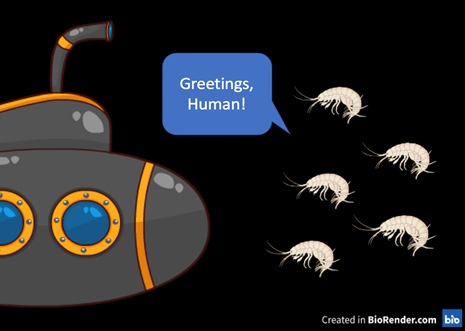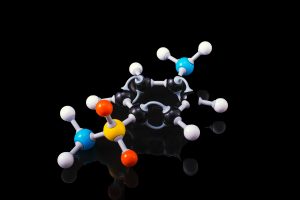Dwellers of the Deepest Deep: A Biochemical Manual to Surviving the Abyss
Fields covered: Biochemistry, Molecular Biology, Enzymology, Physiology, Marine Biology
Related Articles:
§ How Tiny Crustaceans Survive the Crushing Pressures of the Mariana Trench §
![]() Deep-Sea, Shrimp-like Creatures Survive by Eating Wood §
Deep-Sea, Shrimp-like Creatures Survive by Eating Wood § ![]() The Hadal Amphipod Hirondellea gigas Possessing a Unique Cellulase for Digesting Wooden Debris Buried in the Deepest Seafloor (open access) §
The Hadal Amphipod Hirondellea gigas Possessing a Unique Cellulase for Digesting Wooden Debris Buried in the Deepest Seafloor (open access) § ![]() Molecular adaptation in the world’s deepest-living animal: Insights from transcriptome sequencing of the hadal amphipod Hirondellea gigas §
Molecular adaptation in the world’s deepest-living animal: Insights from transcriptome sequencing of the hadal amphipod Hirondellea gigas § ![]() An aluminum shield enables the amphipod Hirondellea gigas to inhabit deep-sea environments (open access) |
An aluminum shield enables the amphipod Hirondellea gigas to inhabit deep-sea environments (open access) |
To a thalassophobe, the Mariana Trench is the ultimate stuff of nightmares. Its deepest point, located in the aptly-named Challenger Deep valley, is ~11,000 m below sea level, boasts a crushing pressure more than 1000 times the standard atmosphere, and has been visited by fewer people than the Moon. It’s also oxygen-scarce, nutrient-depleted, and barely above freezing temperatures.
What can possibly survive in these hostile conditions?

Scientists were expecting to find microscopic life… if they were lucky. So imagine their surprise when they discovered numerous two inch-long amphipods, casually swimming about.
Yes, that’s right: Hirondellea gigas, a humble shrimp-like crustacean, somehow managed to make the ocean’s most inhospitable region its home.
How does this creature keep from starving, and more critically, from being squished into a pulp? The answer lies in its unique physiology—specifically, its arsenal of biochemical adaptations.
- Wood-munching enzymes. With little food to go around on the seabed, H. gigas can’t afford to be a picky eater. It’s therefore evolved a cocktail of enzymes to digest sunken wood leftovers, originating from trees swept into the sea and even shipwrecks. Among these enzymes is a completely novel cellulase, capable of converting plant matter into energy-giving sugars with unprecedented efficiency. What’s cooler still: Rather than get denatured, this cellulase actually works better at the crazy pressures of Challenger Deep.
- Aluminium armour. As H. gigas feasts on dead plant debris, it ingests sediment from the seafloor. This sediment contains aluminium ions, which are extracted by H. gigas via the sugar-based gluconolactone in its gut. The ions, now concentrated and exposed directly to alkaline seawater, are transformed into aluminium hydroxide gel. H. gigas applies this as a tough watertight coating to its exoskeleton, preventing it from dissolving under high pressure.
- Protein-stabilising molecules. Intense pressures tend to pack proteins together into immovable bunches, stopping them from participating in important processes. To be able to function at all, H. gigas must counter this. Fortunately, H. gigas has yet another trick up its sleeve: Osmolytes. These molecules stick themselves between the coagulating proteins, separating and stabilising them. One of these osmolytes is TMAO—you might recognise it as the offending “fishy smell” in seafood markets. H. gigas has TMAO in abundance, so it’s probably one stinky amphipod.
All this just goes to show: Never underestimate the weirdness and tenacity of nature, especially its underdogs.




